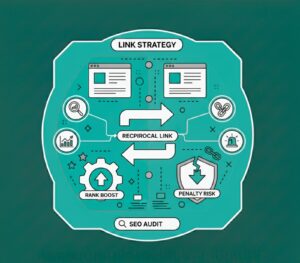What are the Content Strategy Metrics That Drive Successful Content Strategies
Blogs | Category
Written By: Lauren Davison
Introduction
Creating content isn’t enough anymore. You need to know if it actually works. That’s where content strategy metrics come in. They will show what is hitting the mark and what’s falling flat. This helps the teams to make smarter decisions.
Learning metrics like audience engagement and click rates helps you to improve. They will show how audiences are interacting with your content. With these numbers, you can change the method or format to improve your scores. It will turn your content from being down to perform better.
In this post, we’ll break down the key content strategy metrics, content marketing KPIs, give practical tips on measuring them, and highlight tools that make it easier to see real content ROI tracking.
Table of Contents
Why Tracking Content Metrics Is Essential
Making content and posting it without tracking is set to fail. Proper content strategy metrics can help you correct your content by showing you which parts need to improve. This helps you to save more time and create better content than before.
Understand Audience Engagement Metrics
Numbers like clicks, shares, comments, and time on page are more than stats—they show behaviour. Which posts capture attention? Which gets skimmed? Which gets shared? Paying attention to these signals helps you make content your audience actually wants.
Measure ROI and Business Impact
Vanity metrics feel good, but they don’t pay off. Look at leads, sales, and sign-ups. These are the real proofs that content is working. Following these numbers turns guessing into clear, actionable insight.
Optimise Future Content
Data points act like signposts. They highlight which topics hit the mark and which don’t. Use what you learn to tweak ideas, formats, or timing. Every insight nudges your strategy closer to success.
Top Content Strategy Metrics to Monitor
Numbers tell the real story. They show what grabs attention, what falls flat, and where you should put your energy next.
Traffic Metrics
Pageviews, unique visitors, and referral sources give a first glance at reach. They show how people find your content and which channels are pulling weight.
Engagement Metrics
Time on page, scroll depth, shares, and comments reveal behaviour. Are readers finishing the article or leaving halfway? These signals show what sticks and what doesn’t.
Conversion Metrics
Leads, downloads, sign-ups, and purchases measure results. They prove your content is doing more than entertaining—it’s creating action.
SEO Metrics
In SEO Metrics, you can check organic ranking and keyword performance thoroughly. They can give you a report on how easy it is for audiences to find your content online.
Retention Metrics
The reports of Bounce rate and session duration show loyalty. High retention means audiences value your content and will come back for it.
How to Choose the Right Metrics for Your Business Goals
Not every number matters. The key point is spotting metrics that actually tell you something useful about your efforts.
Align Metrics With Objectives
To improve your content, start by asking the question, What do you really need to achieve? Pick KPIs that match your goals, which means every number you track has a purpose. And helps you guide towards the right direction.
Focus on Actionable Data
Metrics only matter if they guide your next move. Pay attention to numbers that suggest action. Anything that doesn’t help you decide is just noise.
Avoid Vanity Metrics
Big numbers can be tempting, but they can fool you. Likes, pageviews, or followers alone don’t show real success. Look for metrics that prove your content makes a difference.
Tools to Measure Content Strategy Performance
The right tools make metrics clear. They can differentiate what’s working and what’s failing to improve your content better.
Google Analytics & Google Search Console
Use these to track traffic, engagement, and SEO. Analytics reveals how visitors move through your site. Search Console shows which keywords bring people in. Together, they give a solid view of your content’s reach.
Social Media Analytics
Measure shares, reach, and interactions on each platform. These insights show what posts capture attention and what gets ignored. Social data tells you how your audience really responds.
Marketing Automation Platforms
Tools like HubSpot or Mailchimp can help you track leads and content ROI. They can help you link your content directly to results. It shows what needs to be updated and what falls short of improving your content.
Best Practices for Reporting and Using Metrics
Regular Reporting
Make a habit of checking the content report weekly or monthly. These frequent checks can improve your content. Also, they can help you spot trends or catch issues faster. This may help you to see if your content is reaching the goal you have set.
Visual Dashboards
Better visuals, like charts or graphs, can help you to show what’s working and what needs to be fixed. Visuals often keep your team aligned and reduce confusion on points. They can simplify your points and share your insight more easily.
Continuous Improvement
If you are trying to score your content, then metrics aren’t a final score. You can use the insights to tweak topics and also adjust timing. Each smaller change can make your content perform better and efficiently.
Case Study: How Metrics Improved Content Performance
If a mid-sized e-commerce brand services wanted to grow in online sales, then it would need to do some important things. They have to track their brand traffic, engagement and conversions. You can do it across blogs, emails or social media. This helps them to figure out what truly worked in their favour.
Some topics will get lots of clicks and traffic, while others struggle to reach the audience. By understanding the patterns, you can reshape your content calendar well. This makes the future publication do well.
Conversions—newsletter sign-ups and purchases—were measured closely. The team focused on content that encouraged readers to act. In three months, conversion rates jumped by 25%.
Dashboards and regular reports made trends easy to spot. Each insight sparked small tweaks: testing formats, adjusting headlines, or shifting publishing times. Step by step, engagement grew, and results became measurable.
This case proves it: tracking the right content strategy metrics doesn’t just show numbers—it drives real business growth.
Conclusion
By keeping track of the right content metrics, you can improve your upcoming content without issues. Also, the number of clicks and reading sessions can help you improve more than before.
Start with your clear KPIs that match your goals. By watching the metrics often, you can notice any changes and tweak your content strategy when needed.
Contact us as we’re passionate about sharing honest, helpful insights that help you make confident choices about your skin and wellness.
Frequently Asked Questions (FAQs)
- What are content strategy metrics, and why do they matter?
Think of them as a compass for your creative work. They show you where your audience is truly listening, helping you invest your energy wisely.
- How often should I track these numbers?
Your schedule should match your pace. A quick weekly glance spots immediate fires, while a deep monthly review reveals the real trends taking shape.
- Which metrics deserve my attention?
It depends on my goal. I pay attention to actionable metrics like engagement, leads, and conversions. Numbers that look big but don’t drive results—like only pageviews or likes—aren’t useful.
- How do these numbers improve future content?
They reveal your audience’s quiet preferences. You learn which topics spark real connection, letting you craft work that truly resonates and sticks.

Written by - Lauren Davison
Introducing Lauren – one of our content writers who has a flair for SEO and creative strategy!
With a Master’s Degree in Creative Writing, Lauren has niched down into SEO and content writing.
Outside of work, she loves watching the darts, reading and the pub on the weekend.
Want some more?
Latest Insights & News

Reciprocal Links in SEO: Do They Still Boost Rankings or Risk Penalties?
For the keyword “reciprocal links SEO,” focus on explaining how reciprocal linking works today. Reciprocal links are not harmful by default, but Google can flag excessive or manipulative link exchanges. To stay safe, only exchange links when they are contextually relevant, natural, and valuable to users.

SEO as the Foundation of Digital Growth: Why It’s More Than Just a Marketing Tactic
When focusing on “SEO for business growth,” highlight how SEO directly contributes to long-term scalability. Modern SEO goes beyond ranking—it boosts brand visibility, qualified traffic, customer trust, and conversion opportunities. To optimize effectively, ensure your content covers user intent, builds topical authority, and leverages technical SEO elements like fast loading, mobile-friendly design, and structured data.

AEO Mastery: Step-by-Step Guide to Building AI Citations & Boosting Visibility
When targeting the keyword “AEO Guide to Building AI Citations & Boosting Visibility,” focus on Authoritative Engine Optimization (AEO) principles. AI-driven search requires clear, structured, and entity-rich content.
